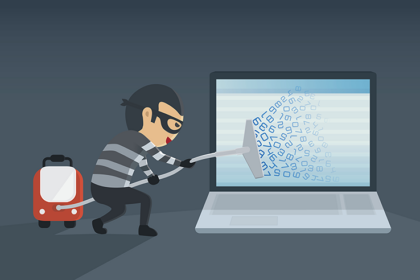Disaster Relief Scams: Preying on Compassion in Times of Crisis
In the aftermath of natural disasters, the desire to help those affected can be overwhelming. This generosity, however, can make us vulnerable to scams that exploit our compassion. Disaster relief scams are a growing problem, with cybercriminals taking advantage of our willingness to donate to those in need.
A Scamming Landscape Evolving with Disasters
The tactics employed by disaster relief scammers are constantly evolving, adapting to the changing landscape of communication and the availability of information. In the past, scammers relied heavily on phone calls and physical mail to reach their targets. However, the rise of digital communication platforms like email and social media has provided them with a wider reach and new avenues for deception.
Common Scams and Their Deceptive Tactics
Disaster relief scammers employ various techniques to deceive unsuspecting victims. Here are some of the most common tactics:
1. Fake Charities
Disaster relief scammers create websites and social media profiles that appear to be legitimate charities, soliciting donations for specific disaster relief efforts (Image of Fake Charity Website). However, these organizations may have no connection to the actual disaster or may misappropriate the donated funds for personal gain.
2. Fake Donation Requests
Fraudsters send emails or social media messages impersonating legitimate charities or government agencies, urging recipients to make urgent donations to support disaster relief efforts. These messages often contain emotionally charged language and pressure tactics to elicit immediate action (Image of Fake Donation Email).
3. Fake Government Assistance
Scammers impersonate government agencies tasked with providing disaster relief, such as FEMA or the Red Cross, and contact individuals offering assistance or claiming they need to verify their identity for benefits. These requests often involve providing personal information or clicking on malicious links.
4. Fake Coupons or Discount Codes
Scammers may use social media or email to spread fake coupons or discount codes for disaster relief supplies. Clicking on these links can lead to malicious websites or download malware.
5. Fake Charity Telemarketing Calls
Scammers may also call individuals claiming to be representing a legitimate charity and solicit donations over the phone. These callers may use high-pressure tactics and emotional appeals to convince you to donate without giving you enough time to verify the charity’s legitimacy.
6. Fake GoFundMe Pages
Scammers may create fake GoFundMe pages claiming to be helping victims of a disaster. These pages may use real photos and personal information of the victims to make them appear legitimate. However, the money donated may not reach the intended recipients.
7. Misuse of Victims’ Information
Scammers may steal contact information from victims of disasters and use it to send phishing emails or spam messages. These messages may contain links to malicious websites or attempt to trick recipients into revealing sensitive information.
8. Fake Volunteer Opportunities
Scammers may post fake volunteer opportunities on social media or online job boards. These opportunities may offer high pay or promise to help victims of disasters. However, these scammers may be collecting personal information from applicants or using the information for other malicious purposes.
9. False Promises of Employment
Scammers may also target victims of disasters with false promises of employment opportunities in disaster relief efforts. These offers may sound too good to be true and may require upfront payments or personal information.
10. Exploiting Children or Elderly
Scammers may target vulnerable populations, such as children or elderly people, with emotional appeals and false promises of assistance. They may use these individuals’ trust and lack of knowledge to steal their money or personal information.
Protecting Yourself from Disaster Relief Scams
While it’s important to be charitable and support those affected by disasters, it’s equally important to be vigilant against scams.
In the aftermath of a natural disaster, the need for assistance is at its highest. Unfortunately, this also makes it an opportune time for scammers to take advantage of people’s generosity and vulnerability. Here are 10 tips to protect yourself from disaster relief scams:
- Verify the authenticity of charities: Before donating to any organization, research its reputation and legitimacy. Check its website for contact information and physical address, and look for reviews or complaints from previous donors.
- Be wary of urgent requests: Scammers often create a sense of urgency to pressure you into making a decision without proper consideration. If a message demands immediate action or threatens consequences for not responding, exercise caution.
- Never provide personal information: Scammers will try to trick you into revealing personal information, such as credit card numbers, bank account information, or Social Security numbers. Never share this sensitive data unless you are certain of the organization’s legitimacy.
- Click on links with caution: Scammers often include links in their messages that lead to fake websites or malicious software. Hover over links to see the actual destination before clicking on them.
- Do not wire money or send cash: Scammers often ask for immediate wire transfers or cash payments to avoid detection. These methods are difficult to trace and may be difficult to recover if you discover you have been scammed.
- Report suspicious activity: If you receive a suspicious email, phone call, or social media message related to disaster relief, report it to the authorities and the targeted charity.
- Only donate through official channels: Go directly to the charity’s website or call their toll-free number to make a donation. Avoid clicking on links or donating through third-party websites.
- Be skeptical of high-pressure tactics: Legitimate charities will not pressure you into donating. If a caller or email makes you feel uncomfortable or rushed, hang up or delete the message.
- Don’t assume a charity is legitimate just because it’s on social media: Scammers can create fake social media pages that look like legitimate charities. Only donate to charities that have been verified by charity watchdogs.
- Take your time and make informed decisions: Don’t rush into making a donation. Take some time to research the charity and ensure it is legitimate before giving your money.
Additional tips:
- Beware of fake fundraisers: Scammers may set up fake GoFundMe or other fundraising pages to collect donations. Only donate to verified fundraisers.
- Be wary of door-to-door fundraisers: Scammers may pose as legitimate charities to collect donations in person. Only donate to charities you are familiar with and ask for identification from fundraisers.
- Beware of fake volunteers: Scammers may pose as volunteers to gain access to disaster victims’ homes or personal information. Only accept help from volunteers you trust or through reputable organizations.
- Be aware of your surroundings: Scammers may target victims of disasters in crowded or chaotic environments. Be aware of your surroundings and keep valuables out of sight.
Empathy vs. Gullibility
It’s perfectly normal to want to help those in need after a disaster. However, it’s crucial to strike a balance between empathy and gullibility. While our compassion should drive us to support those affected, we should also exercise caution and avoid falling prey to scams that exploit our desire to help. By doing our due diligence and researching legitimate charities, we can ensure that our donations reach those who need them most.
It is important to distinguish between empathy and gullibility when it comes to disaster relief scams. Empathy is the ability to understand and share the feelings of others, while gullibility is the tendency to believe or trust people too easily.
Empathy can be a powerful motivator for wanting to help others in need. When we see the suffering of others, we may feel compassion and want to do something to alleviate their pain. This is a natural and positive response. However, it is important to be aware that scammers can exploit our empathy to take advantage of us.
Gullibility can make us more susceptible to falling for scams. If we are not careful, we may be more likely to believe the stories that scammers tell us, especially if they evoke our emotions. We may also be more likely to donate money or provide personal information without properly verifying the legitimacy of the charity or organization.
Reporting a Disaster Relief Scam
There are several places you can report a disaster relief scam. Here are a few options:
- Contact the Federal Trade Commission (FTC): The FTC is the government agency that regulates consumer protection. You can file a complaint online, by mail, or by phone at 1-877-FTC-HELP (1-877-382-4357).
- Report to the National Center for Disaster Fraud (NCDF): The NCDF is a joint effort of the Department of Justice, the Department of Homeland Security, and FEMA. You can file a complaint online or by calling 1-866-720-5721.
- File a complaint with your local law enforcement agency: If you have been contacted by a scammer in person, or if you have been scammed out of money, you can file a report with your local police department or sheriff’s office.
- Contact the organization that you believe is being impersonated: If you have received a suspicious email, phone call, or social media message that claims to be from a legitimate charity, you can contact that charity directly to verify the authenticity of the message.
- Share your experience on social media: By sharing your experience with scam attempts, you can help to warn others and prevent them from being scammed. Use the hashtag #DisasterScam to raise awareness of these scams.
Reporting scams is important because it helps to protect others from being victimized. It also helps to identify and prosecute scammers. The more information that law enforcement has, the better equipped they are to take down these operations.
Here are some additional tips for reporting disaster relief scams:
- Be as detailed as possible in your report. The more information you can provide, the better the authorities will be able to investigate the scam.
- Keep copies of any documentation related to the scam. This may include emails, phone records, or screenshots of social media messages.
- Do not engage with the scammer. If you receive a suspicious message, do not respond to it. This could encourage the scammer to continue contacting you or to target others.
By following these tips, you can help to protect yourself and others from disaster relief scams.

















